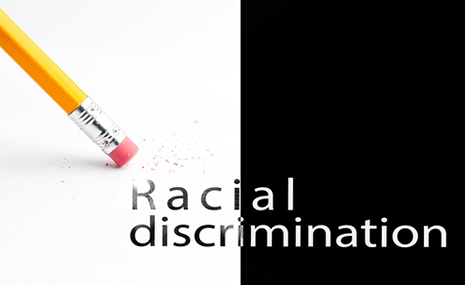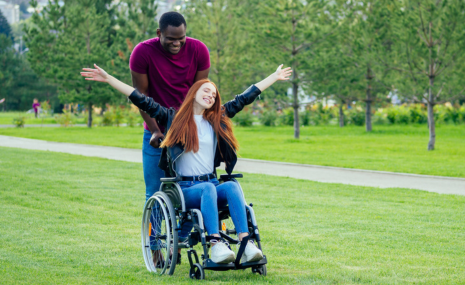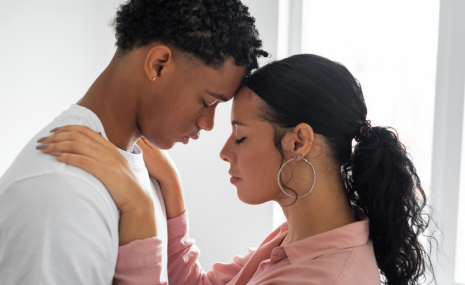Does Reverse Racism Really Exist?
 When Tyler Perry received backlash from the black community for his all-white starring cast in his drama series "Too Close to Home", he said it was "totally reverse racism". Today we ask: Is reverse racism even a thing? Here is one side to that discussion...
When Tyler Perry received backlash from the black community for his all-white starring cast in his drama series "Too Close to Home", he said it was "totally reverse racism". Today we ask: Is reverse racism even a thing? Here is one side to that discussion...
Reverse racism is used to describe acts of discrimination and prejudice perpetrated by racial minorities or historically oppressed ethnical groups against individuals belonging to the racial majority. In other words, it is reverse discrimination based on racial criteria.
Find your soulmate on AfroRomance










It describes the irony of an individual using their race to gain special status or privileges while at the same time demanding others to treat them as equals and look beyond the color of their skin.
Technically speaking, there is nothing like reverse racism. Reverse racism is a classic example of hypocrisy. When a black-skinned person screams "Black Power! , he is standing up for his rights. When a white-skinned person yells "White Power!", he is a racist
Here are some reasons why reverse racism doesn’t exist:
1. Racism equals to privilege plus power
For a person to be a racist, he/she needs to possess two traits. The first trait is a privilege which is a structural, institutional, and social advantage. White people occupy positions of racial privilege, even when they are disadvantaged in other ways. Furthermore, you also have to have power which is the ability, backed up by society, to be a strong social influence, with greater leeway when it comes to what you do, where, and how.
For instance, white people benefit from privilege and power when they are not arrested for drug crimes at disproportionate rates, while black people experience racism when they are arrested, and sentenced, for the same crimes. This reflects the act of racial power imbalance in the justice system.
People of color talking about white people do not occupy positions of privilege or power. Therefore, they cannot be racist. Racism is structural, not personal.
2. The legitimate response to oppression is anger.
When “reverse racism” is flung around, it is often in response to angry language, to protests, to fights for equality. People of color have been pushing back on power and privileges for a long time. Many of them are tired of it. Unsurprisingly, some are not interested in moderating their tone for a white audience. That means that sometimes they use strong language, frustration, rage, or to cause a heavy impact on the observers. Still not reverse racism.
More importantly, insisting that people of color need to be nice about the way they talk about racism is, in fact, racist.
3. Attempts to rectify systemic injustices are not examples of reverse racism.
The famous evidence used as “proof” of reverse racism is that of affirmative action and minority admissions at colleges, universities, and some companies. The argument goes that people of color are stealing positions and jobs away from better or equally qualified white people.
This is not the case. The problem is that generations of injustice have resulted in under-representation of people of color in these areas, and the goal of related initiatives and affirmative action is to ensure that they are not harmed by racial bias in admissions and hiring decisions. People of color are not admitted or hired “over white people.” They are considered equally, with an eye to the fact that subconscious bias may be influencing decisions made by people in power, who are, you guessed it, often white.
4. White people are not oppressed.
The history of the oppression of people of color by the White spans centuries. Africans were enslaved and were brought to the New World, where European colonialists stole land from Indigenous people. Colonies across the Global South brought untold wealth into the coffers of Europe, with the low, low cost of suffering for native populations.
In the United States, the black community is dealing with the aftermath of slavery and the poverty and systemic prejudice it left behind. In most countries of Africa, the collapse of former colonies left governments in shambles and unable to support themselves. In Australia, indigenous people struggle with a high rate of poverty and low access to health care.
White people in contrast with people of color don’t experience systemic discrimination that makes it so hard to find and hold jobs, get health care, access housing, receive a fair treatment in the justice system, and much more. When it comes to social disparities, they are the ones consuming and receiving the bulk of the resources; in just one example, black women in the U.S. are likely to die from breast cancer because of delay in diagnosis. That is the end product of racism within the medical system.
5. Prejudice and racism are not the same things.
Some people of color may view whites prejudicially given the interactions of racism in society. Anyone can believe in stereotypes or hold ideas about members of other groups that are not entirely accurate.
However, being, and behaving, prejudicially is not the same thing as racism, especially when such prejudice punches up, not down.
6. Hard truths are not racist; they are just hard to hear.
Making a racist statement is a manifestation of racist culture; being “mean” is not. For whites, it can be difficult to be confronted with the reality of racism and with comments from people of color about how benefit and power operate. It’s tempting to take such comments personally and to insist that people of color are being “mean,” which is an accusation of reverse racism.
In this case, the goal is often to invalidate the points made. If someone is being racist, surely her comments can be dismissed instead of taken seriously. Thus, a white person uncomfortable with a racial discrimination conversation may claim that it is reverse racist so as to escape the conversation or escape her own role in racist power dynamics.
Responses to "Does Reverse Racism Really Exist?"
Be the first to leave a comment
You must be logged in to post a comment.















































